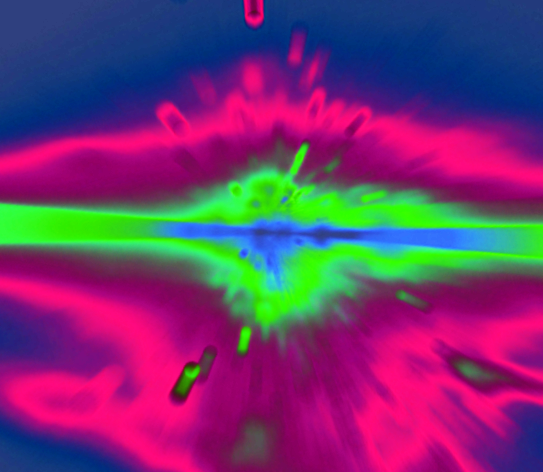Laser study nears quadrillionths
 An interesting maths trick may make eye surgery simpler.
An interesting maths trick may make eye surgery simpler.
New techniques could allow an older style of lasers to deliver high amounts of energy in very short bursts of time, with potential applications in surgery or the engineering of delicate materials.
The scientists have achieved this remarkable result by returning to a simple laser technology that is common in telecommunications, metrology and spectroscopy. These lasers use an effect known as soliton waves, which are waves of light that maintain their shape over long distances.
Solitons were first identified in the early 19th century, not in light but in water waves in the industrial canals of England.
“The fact that soliton waves in light maintain their shape means they are excellent for a wide range of applications, including telecommunications and spectrometry,” said lead author Dr Antoine Runge from the University of Sydney.
“However, while lasers producing these solitons are simple to make, they do not pack much punch. A completely different – and expensive – physical system is required to produce the high-energy optical pulses used in manufacturing.”
This research builds on earlier discoveries by the team at the University of Sydney Institute for Photonics and Optical Science, which discovered pure-quartic solitons in 2016.
In a normal soliton laser, the energy of light is inversely proportional to its pulse duration, demonstrated by the equation E = 1/t. If you halve the pulse time of the light, you get twice the amount of energy.
Using quartic solitons, the energy of light is inversely proportional to the third power of the pulse duration, or E = 1/t3. This means if your pulse time is halved, the energy it delivers in that time is multiplied by a factor of eight.
“It is this demonstration of a new law in laser physics that is most important in our research,” Dr Runge said.
“We have shown that E = 1/t3 and we hope this will change how lasers can be applied in the future.”
Establishing this proof of principle will enable the team to make more powerful soliton lasers.
The research project was able to produce pulses that are as short as a trillionth of a second, but the team has plans to get much shorter than that.
“Our next goal is to produce femtosecond duration pulses – one quadrillionth of a second,” Dr Runge said.
“This will mean ultra-short laser pulses with hundreds of kilowatts of peak power.”
Such an advance could make the older lasers ideal candidates for the processing of materials that require short, powerful pulses. One application could be in corneal surgery, which relies on gently removing material from the eye. This requires strong, short light pulses that do not heat and damage the surface.







 Print
Print